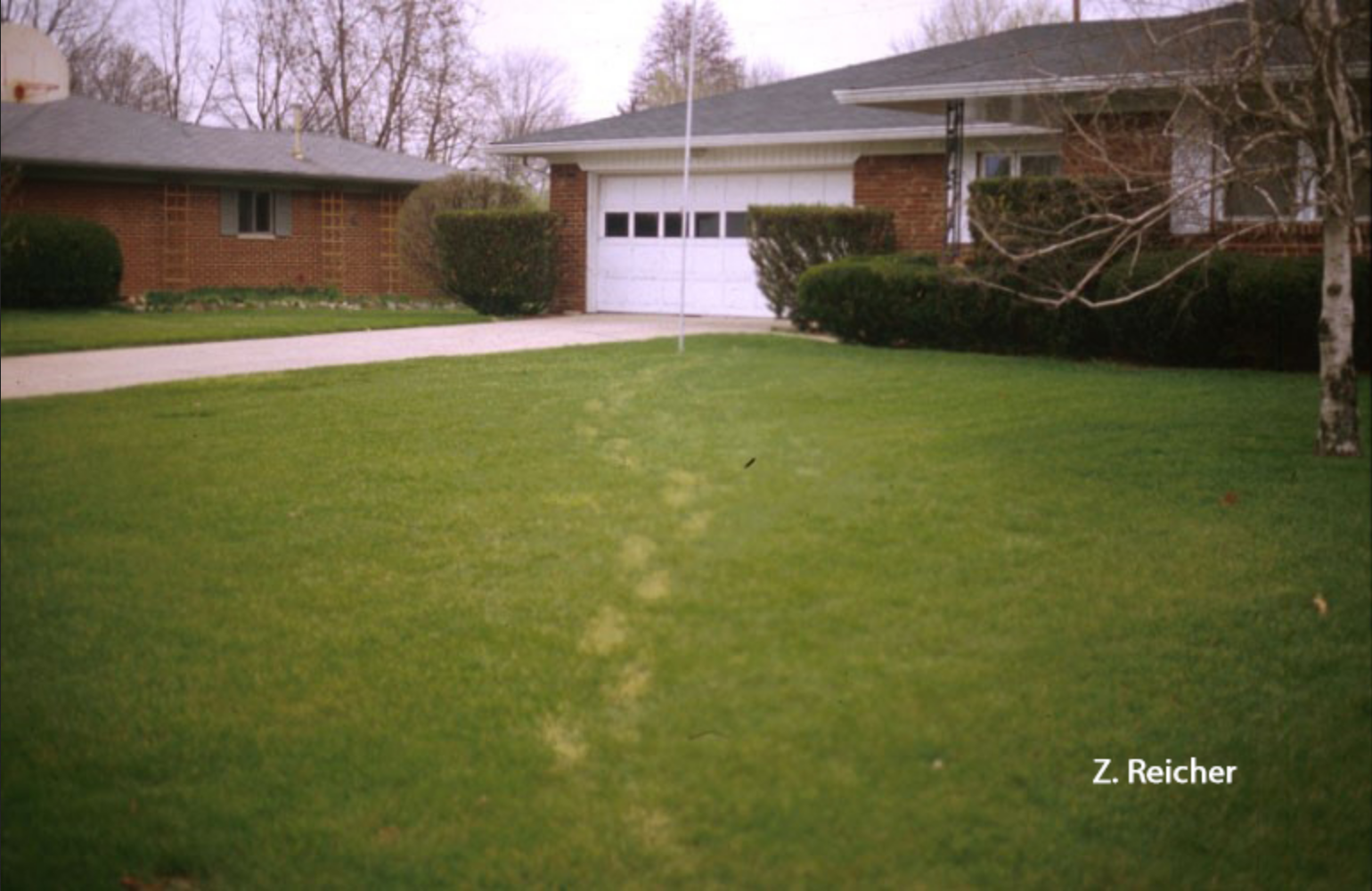picture of the week
November 15, 2021
Winter Lawn Care Tips
John Orick, Purdue Master Gardener State Coordinator, Department of Horticulture and Landscape Architecture
Winter in Indiana means it is time to prepare your lawn and lawn equipment for the next season. Here are some basic tips for caring for your lawn and equipment during this winter season:
- Avoid walking on turf areas before the frost has melted. Cool-season turfgrass species are able to endure our frosty mornings in Indiana as long as there is no foot or vehicle traffic on frosted turf. The turf leaves become blackened and soon brown after foot or vehicle traffic on turf before the frost has melted. This damage is due to ice crystals rupturing plant cell walls. Turf that is damaged by frost can recover in several weeks early in the fall but it may take longer when the damage occurs later in the growing season.
Click image to enlarge
- Avoid fertilizer and broadleaf herbicide applications once the turf is dormant. Once the turfgrass plants have entered winter dormancy (or when the soil is frozen), the plants are not able to utilize nutrients from fertilizer applications for plant growth processes. Likewise, the process of translocation in weed plants slows to the point of rendering broadleaf herbicide applications to not be effective. Apply broadleaf herbicides when the air temperature is between 50 and 85 degrees F.
- Remove excessive leaf debris from turf areas. Excessive leaf debris left on the lawn during winter can block the utilization of light and the exchange of gases during the winter months. Removing leaf debris by mulching, raking, or some other method will prevent turf loss.
- Prepare your mower for spring. The winter season is a great time to prepare your mower and other equipment for the next growing season. Run your lawn equipment out of fuel, change the oil, and have mower blades sharpened this winter. These preparations will help you avoid the spring rush at the mower repair shops! Mowing turf with sharp blades is healthier for the turf plants and more aesthetically pleasing.
Related Articles and Publications:
Fertilizing Established Cool-Season Lawns: Maximizing Turf Health with Environmentally Responsible Programs (AY-22-W) https://www.extension.purdue.edu/extmedia/AY/AY-22-W.pdf
Control of Broadleaf Weeds In Home Lawns (AY-9-W) https://www.extension.purdue.edu/extmedia/AY/AY-9-W.pdf
Mowing, Dethatching, Aerifying, and Rolling Turf (AY-8-W). https://www.extension.purdue.edu/extmedia/ay/ay-8-w.pdf



